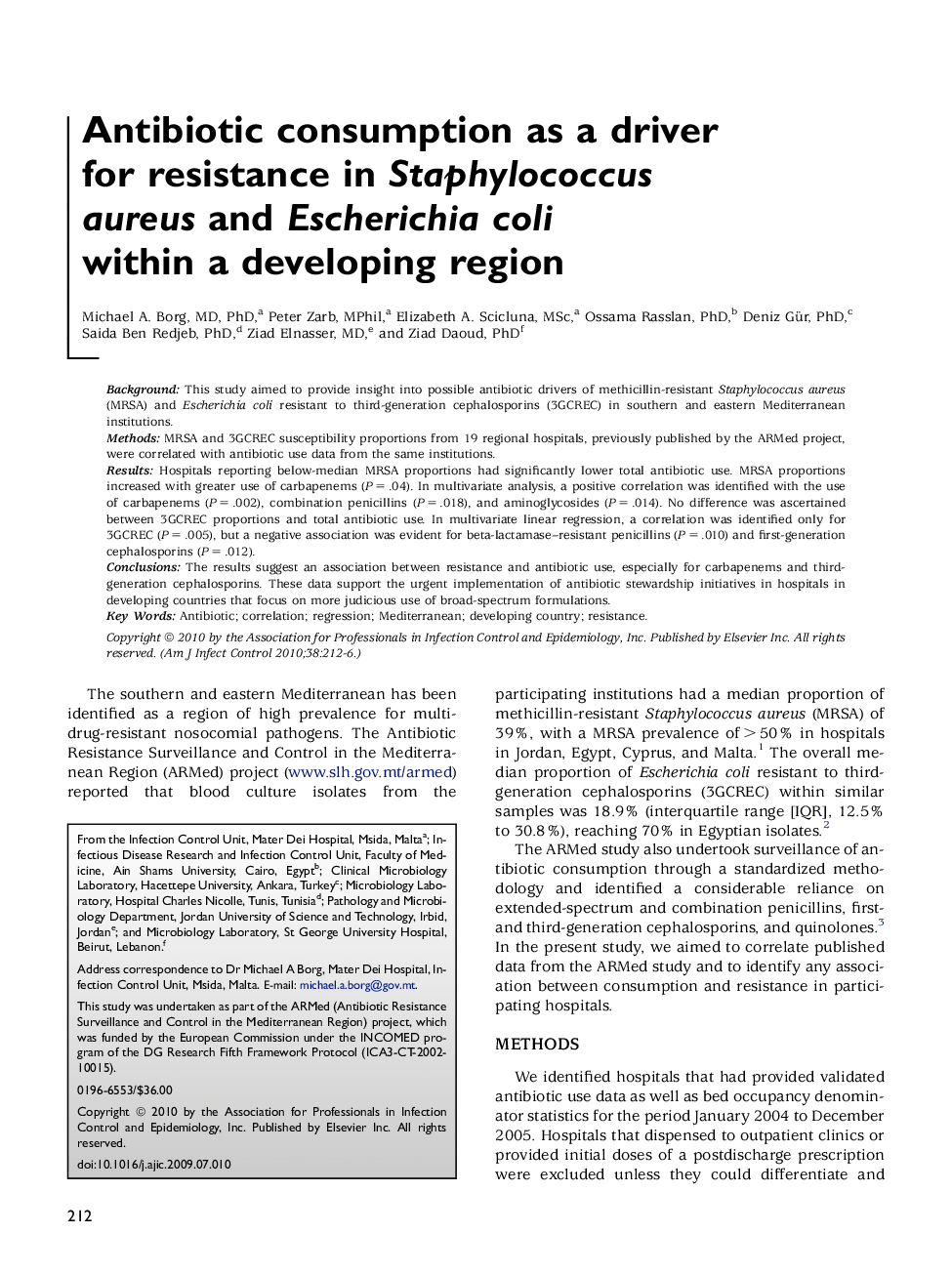| Article ID | Journal | Published Year | Pages | File Type |
|---|---|---|---|---|
| 2639802 | American Journal of Infection Control | 2010 | 5 Pages |
BackgroundThis study aimed to provide insight into possible antibiotic drivers of methicillin-resistant Staphylococcus aureus (MRSA) and Escherichia coli resistant to third-generation cephalosporins (3GCREC) in southern and eastern Mediterranean institutions.MethodsMRSA and 3GCREC susceptibility proportions from 19 regional hospitals, previously published by the ARMed project, were correlated with antibiotic use data from the same institutions.ResultsHospitals reporting below-median MRSA proportions had significantly lower total antibiotic use. MRSA proportions increased with greater use of carbapenems (P = .04). In multivariate analysis, a positive correlation was identified with the use of carbapenems (P = .002), combination penicillins (P = .018), and aminoglycosides (P = .014). No difference was ascertained between 3GCREC proportions and total antibiotic use. In multivariate linear regression, a correlation was identified only for 3GCREC (P = .005), but a negative association was evident for beta-lactamase–resistant penicillins (P = .010) and first-generation cephalosporins (P = .012).ConclusionsThe results suggest an association between resistance and antibiotic use, especially for carbapenems and third-generation cephalosporins. These data support the urgent implementation of antibiotic stewardship initiatives in hospitals in developing countries that focus on more judicious use of broad-spectrum formulations.
